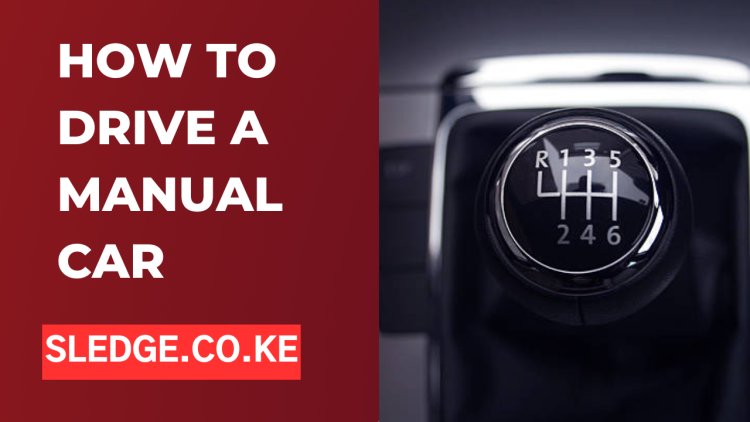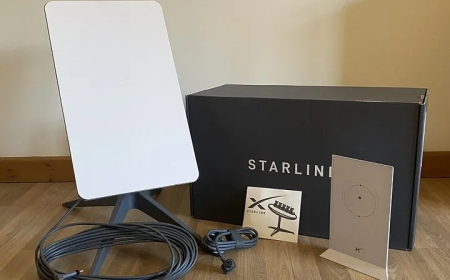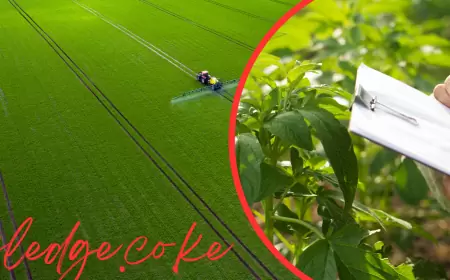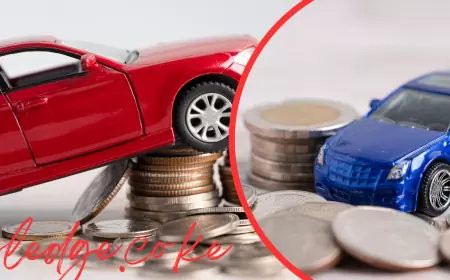How To Drive A Manual Car: Your Ultimate Step-by-Step Guide
Learn how to drive a manual car with our ultimate step-by-step guide, including beginner tips, frequently asked questions, and detailed instructions on mastering the stick shift.

Do you want to experience the thrill of driving a stick shift? Learning how to drive a manual car can be a rewarding and exhilarating skill to acquire. It is fun and can give you more control over your vehicle and enhance your understanding of how cars work. This comprehensive guide will walk you through the basics of driving a manual car, helpful tips, frequently asked questions, and step-by-step instructions to ensure you master this invaluable skill.
Driving a manual car may seem daunting initially, but it can quickly become second nature with practice and determination. The excitement of shifting gears, the feeling of power as you control your car's acceleration, and the satisfaction of executing a perfect downshift are just a few reasons why manual driving enthusiasts swear by the stick shift.
Although automatic cars have become the standard recently, manual driving remains a valuable skill. It can come in handy in various situations, such as driving a friend's car, renting a vehicle while traveling, or even test-driving your dream sports car. Moreover, manual cars often provide better fuel efficiency and lower maintenance costs, making them an attractive choice for many drivers.
So, are you ready to embark on this exciting journey of learning to drive a manual car? In this guide, we'll cover everything you need to know, from understanding the pedals and gear shifters to mastering the art of changing gears and tackling hills. With patience, practice, and our expert guidance, you'll be confidently driving a stick shift in no time.
Getting Started
Before diving into the mechanics of driving a manual car, it's essential to understand the pedals and the gear shifter clearly.
Find a Suitable Practice Area
As a beginner, it's crucial to find a safe and suitable area for practice, such as an empty parking lot or a quiet residential street with minimal traffic. This will allow you to focus on mastering the basics without the added pressure of dealing
with busy roads and other drivers.
Understand the Pedals
Manual cars have three pedals: the clutch, the brake, and the accelerator (or gas pedal). Familiarize yourself with their positions and functions:
- Clutch (left pedal): This pedal disengages the engine from the transmission, allowing you to change gears. You'll need to press the clutch pedal while shifting gears.
- Brake (middle pedal): This pedal slows down or stops the car. Use your right foot to apply pressure to the brake pedal.
- Accelerator (right pedal): This pedal controls the car's speed. Pressing it increases the engine's power output, causing the vehicle to accelerate. Use your right foot to apply pressure to the accelerator pedal.
Familiarize Yourself with the Gear Shifter
The gear shifter, or the stick shift, changes gears. It is typically located between the front seats or, in some cars, on the steering column. Gear shifters are usually marked with the gear positions (1, 2, 3, 4, 5, and sometimes 6), along with a reverse gear (R) and a neutral position (N). In neutral, the engine is not engaged with the transmission, allowing the car to roll freely.
Starting and Stopping
Starting the Car
- To start a manual car, follow these steps:
- Ensure the gear shifter is in the neutral position.
- Press the clutch pedal fully with your left foot.
- Turn the ignition key or press the start button to start the engine.
- Slowly release the clutch pedal while keeping your foot on the brake.
Moving Forward: Engaging First Gear
Now that the engine is running, it's time to start moving. To do this:
- With the clutch pedal fully depressed, move the gear shifter to the first gear.
- Slowly release the clutch pedal while gradually applying pressure to the accelerator.
- The car will move forward as the clutch pedal reaches the "biting point" (where the engine and transmission begin to engage).
Coming to a Stop
To bring your manual car to a stop, follow these steps:
- Release the accelerator and press the brake pedal with your right foot.
- Press the clutch pedal with your left foot as the car slows down.
- Shift the gear shifter to the neutral position.
- Bring the car to a complete stop by applying pressure to the brake pedal.
Shifting Gears
Upshifting
To upshift (change to a higher gear), follow these steps:
- Release the accelerator pedal.
- Press the clutch pedal fully.
- Move the gear shifter to the next higher gear.
- Gradually release the clutch pedal while simultaneously applying pressure to the accelerator.
Downshifting
To downshift (change to a lower gear), follow these steps:
- Release the accelerator pedal.
- Press the clutch pedal fully.
- Move the gear shifter to the next lower gear.
- Gradually release the clutch pedal while simultaneously applying pressure to the accelerator.
Finding the Right Gear for Your Speed
As a general rule of thumb, shift to a higher gear when your engine RPM (revolutions per minute) reaches around 2,000 to 2,500 RPM. Shift down when the engine RPM drops below 1,500 RPM. This may vary depending on the vehicle, so consult your owner's manual for guidance.
Handling Hills and Slopes
Starting on a Hill
To start your manual car on a hill, follow these steps:
- With the clutch pedal fully depressed, shift the gear shifter to the first gear.
- Apply pressure
- to the brake pedal to keep the car stationary.
- Slowly release the clutch pedal until you reach the biting point, where the engine and transmission begin to engage. At this point, the car might start to roll back slightly.
- While maintaining pressure on the brake pedal, gently apply pressure to the accelerator pedal to increase engine power.
- As the car starts moving forward, gradually release the brake pedal while applying pressure to the accelerator. Ensure a smooth transition to prevent stalling or rolling backward.
Downshifting on a Decline
Downshifting can help you maintain control and prevent excessive wear on your brakes when driving downhill. To downshift while going downhill:
- Release the accelerator pedal.
- Press the clutch pedal fully.
- Move the gear shifter to the next lower gear.
- Gradually release the clutch pedal while applying slight pressure to the accelerator to match the engine speed to the new gear.
Reversing and Parking
Reversing
To reverse your manual car, follow these steps:
- Bring the vehicle to a complete stop and press the clutch pedal fully.
- Shift the gear shifter to the reverse (R) position.
- Check your surroundings and mirrors to ensure it's safe to reverse.
- Slowly release the clutch pedal while applying slight pressure to the accelerator. As the clutch reaches the biting point, the car will start to move backward.
- Use the brake pedal to control your speed while reversing.
Parking Your Manual Car
To park your manual car, follow these steps:
- Find a suitable parking spot and slowly approach it.
- Shift to the appropriate gear for the parking maneuver (first gear for forward parking, reverse gear for backward parking).
- Use the accelerator, brake, and clutch pedals to control your speed and position as you park the car.
- Once you're parked, shift the gear shifter to the neutral position.
- Apply the parking brake (handbrake) to secure the vehicle.
- Turn off the engine and remove the key or press the stop button.
Tips for Smooth Manual Driving
Mastering the Clutch Control
Smooth clutch control is essential for driving a manual car. Practice finding the biting point and smoothly releasing the clutch to avoid stalling or jerking motions. This skill will improve over time and with practice.
Listening to Your Engine
Please pay attention to your engine's sounds to know when to shift gears. As you become more experienced, you'll be able to recognize the optimal RPM for moving without relying on the tachometer.
Avoiding Common Mistakes
Some common mistakes to avoid while driving a manual car include the following:
- Shifting gears too quickly can cause the car to jerk or stall.
- Riding the clutch or resting your foot on the clutch pedal while driving. This can lead to premature clutch wear.
- Coasting in neutral can reduce your control over the vehicle.
- Using the clutch pedal to hold the car stationary on hills can lead to clutch wear and overheating.
Advanced Techniques
Heel-and-Toe Downshifting
Heel-and-toe downshifting matches the engine speed with the transmission speed while downshifting. This advanced skill is primarily used in high-performance or racing situations and requires practice to master.
Double Clutching
Double clutching is an advanced technique that involves disengaging the clutch twice during a gear change. This method is typically used in older cars without synchronized transmissions but can also ensure smoother gear changes in modern vehicles.
READ ALSO: Best Honda Cars to Buy in Kenya: Top Models and Features to Consider
Conclusion
Learning to drive a manual car can be a challenging yet rewarding experience. With practice and determination, you'll soon master the art of driving a stick shift and enjoy the thrill and satisfaction that comes with it. The sense of control and connection to your vehicle that manual driving offer is unmatched, and the skill can be helpful in various situations throughout your life. Remember that patience and persistence are essential when learning to drive a manual car. It may take time to become comfortable with the different aspects of stick shift driving, but the payoff is well worth the effort.
By following this ultimate step-by-step guide, you'll be well on mastering the art of driving a manual car. Remember to practice regularly and safely; soon, you can take on any road confidently and efficiently. So, embrace the stick shift and experience the excitement of manual driving.











































































